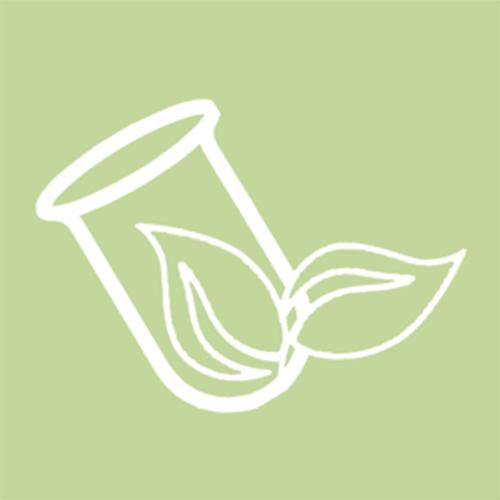Saguling Reservoir, the upper Citarum River basin, Indonesia



Description
Location


Sketch

Information about lithology/geochemistry:
Mainly Quaternary volcanic rocks with Miocene sedimentary facies (limestone), and granite, granodiorite, diorite, alluvium, Pleistocene volcanic facies.
Main Description
- Located on the Cibitung River Catchment, one of tributaries in the Upper Citarum River basin with the Saguling Reservoir as the outlet point.
- Principal regulating services are waste-water treatment, biological control, erosion prevention and maintenance of soil fertility among others. Tourism as cultural service is also relevant.
- The Cibitung River is of vital importance for West Java Province and Jakarta, in terms of economic development and the prosperity of the people.
Enhance ecohydrological processes in novel ecosystem
YES
Apply complementary Ecohydrological processes in high impacted system
NO
This table presents the different categories of ecosystem services that ecosystem can provide, divided in:
Provisioning Services are ecosystem services that describe the material or energy outputs from ecosystems. They include food, water and other resources.

Food: Ecosystems provide the conditions for growing food. Food comes principally from managed agro-ecosystems but marine and freshwater systems or forests also provide food for human consumption. Wild foods from forests are often underestimated.

Fresh water: Ecosystems play a vital role in the global hydrological cycle, as they regulate the flow and purification of water. Vegetation and forests influence the quantity of water available locally.
Regulating Services are the services that ecosystems provide by acting as regulators eg. regulating the quality of air and soil or by providing flood and disease control.

Waste-water treatment: Ecosystems such as wetlands filter both human and animal waste and act as a natural buffer to the surrounding environment. Through the biological activity of microorganisms in the soil, most waste is broken down. Thereby pathogens (disease causing microbes) are eliminated, and the level of nutrients and pollution is reduced.

Erosion prevention and maintenance of soil fertility: Soil erosion is a key factor in the process of land degradation and desertification. Vegetation cover provides a vital regulating service by preventing soil erosion. Soil fertility is essential for plant growth and agriculture and well functioning ecosystems supply the soil with nutrients required to support plant growth.

Biological control: Ecosystems are important for regulating pests and vector borne diseases that attack plants, animals and people. Ecosystems regulate pests and diseases through the activities of predators and parasites. Birds, bats, flies, wasps, frogs and fungi all act as natural controls.
Ecosystem services "that are necessary for the production of all other ecosystem services". These include services such as nutrient recycling, primary production and soil formation.

Maintenance of genetic diversity: Genetic diversity is the variety of genes between and within species populations. Genetic diversity distinguishes different breeds or races from each other thus providing the basis for locally well-adapted cultivars and a gene pool for further developing commercial crops and livestock. Some habitats have an exceptionally high number of species which makes them more genetically diverse than others and are known as ‘biodiversity hotspots’.
Cultural Services corresponds nonmaterial benefits people obtain from ecosystems through spiritual enrichment, cognitive development, reflection, recreation, and aesthetic experiences.

Recreation and mental and physical health: Walking and playing sports in green space is not only a good form of physical exercise but also lets people relax. The role that green space plays in maintaining mental and physical health is increasingly being recognized, despite difficulties of measurement.

Tourism: Ecosystems and biodiversity play an important role for many kinds of tourism which in turn provides considerable economic benefits and is a vital source of income for many countries. In 2008 global earnings from tourism summed up to US$ 944 billion. Cultural and eco-tourism can also educate people about the importance of biological diversity.
Lifezones

![]()
PPT(mm/yr): 3000.0
![]()
T(ºc): 18.0
| Elevation of demosite: | 1600.0 meters above sea level |
| Humidity: | Humid |
| PETr (by year): | 0.35 |
EH Principles
Quantification of the hydrological processes at catchment scale and mapping the impacts
Distribution of ecosystems and their relevant processes (ex: metabolism=water and nutrient uptake and retention; biomass production)
Ecological engineering (integration, dual regulation and biotechnologies in catchment scale for enhancement of ecological potential)
ECOHYDROLOGY ENGINEERING SOLUTIONS
The phytotechnology pond system consists of 3 series of tarpauline ponds, each contains 1 collecting pond, 4 phytoremediation ponds, and 2 buffer ponds.
 Phytotechnology
Phytotechnology
Ecohydrology-Based Control Measures for Controlling Soil Erosion & Trapping Sediment in Erosion Hotspots with Alley Cropping, “Rorak” Farming System, Terrace Farming System
 Ecohydrological Infrastructure
Ecohydrological Infrastructure
Major Issues
- Land degradation and water pollution due to domestic waste, home industry, and agricultural activities in upper catchment.


 Which: Erosion and Sedimentation
Which: Erosion and Sedimentation


Expected Outcomes
(1) scientific based ecohydrological approach and (2) ecotechnology. Both of them are intended for Improvements of Water Quality and Quantity of aquatic ecosystem.
Latest Results
- By using ecohydrological approach and local community-based participation, real-time and online monitoring stations were instaled.
- Preliminary application of the developed physically-based distributed rainfall-sediment-runoff model in the upper Citarum River basin can accurately simulate streamflow discharges, spatial-temporal of the dynamic sources of soil erosion and deposition, and sediment yield amount.
Contacts
Dr. Ignasius Sutapa
- ignasdas@gmail.com
- http://apce.lipi.go.id/
- Asia Pacific Centre for Ecohydrology
- http://apce.lipi.go.id/

Social ecohydrological system
EH Objectives
EH Methodology
Catchment Ecohydrological sub-system
Objectives
Stakeholders
Catchment Sociological sub-system
Activities